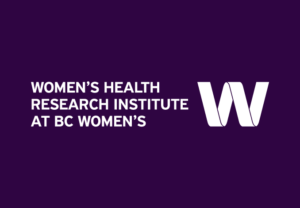
For more than forty years, Dr. Jerilynn Prior has been a passionate advocate for the importance of knowledge translation (KT). Although her methods have changed over time – especially since she founded the Centre for Menstrual Cycle and Ovulation Research (CeMCOR) – what remains at the core of her work is a belief that women have the right to understand their own health.
Dr. Prior’s first foray into the world of KT aligned with the start of her clinical practice in Vancouver.
“As the first woman endocrinologist in the Greater Vancouver region with an interest beyond diabetes, family doctors and dermatologists and others referred many women patients with unwanted facial hair to me,” Dr. Prior explains.
After engaging with patients, she realized they wanted more ways to access information and tools to use to monitor their own health. This led to the creation of two of Dr. Prior’s first KT tools: To help her patients, a paper handout detailing topics like hair removal or therapy options for women with Polycystic Ovary Syndrome (PCOS), and diary to track menstrual cycles, which were mimeographed and then photocopied for distribution.
“My handout and the diary went from hand to hand and eventually to Australia with somebody, and then came back with someone else having been photocopied many more times,” she recalls “I’ve always wanted to share [knowledge] and always figured that it was important for a person to understand what the reason behind my recommendation of a particular therapy, and to treat them with respect as intelligent and decision-making people.”
In 2002, Dr. Prior founded CeMCOR with the mission to “create and share a scientific, holistic body of knowledge” surrounding hormones and menstruation across the life cycle. As part of this mission, the CeMCOR website was launched in the fall of 2003.
The website features practical women’s reproductive life phase information for women from adolescence through to menopause, resources for common problems, details on how to participate in research, and an “Ask Us” page where people can submit questions for experts to answer. And, just as Dr. Prior’s handouts changed hands to address women’s concerns across the globe, today her website draws visitors from all over, for an average of 3500-5000 page- views per day.
“Knowledge must be shared.”
In addition to the website, Dr. Prior and her team continue to work on finding innovative ways to share their work. They have produced several videos explaining the “ABC’s of Osteoporosis” for a variety of audiences, held community events to engage women with their research, and embarked on a social media journey (you can follow them on Twitter @CeMCORNews) and Facebook, “Centre for Menstrual Cycle and Ovulation Research.
Most recently, they have also started creating “five-slide summaries” to make recently published CeMCOR information more accessible. The slides guide readers through: 1) what is already known about the subject area, 2) what needs to be better understood, 3) how their study was done, 4) what the study shows, and 5) what the implications may be for women’s health. The slides are produced using plain language, and are reviewed by a volunteer from the CeMCOR Community Advisory Board to ensure the information is understandable and resonates with the audience for which they have been produced.
Her team is also looking into ways to increase their site’s ability to host videos, so they can continue exploring the medium as a tool for KT. In addition to this work, over the next five years Dr. Prior intends to continue work on PCOS treatment, including scientific testing of an innovative therapy.
To learn more about CeMCOR, visit their website or follow them on Twitter.
FURTHER READING:
Cyclic progesterone and spironolactone for PCOS
http://www.cemcor.ca/resources/new-pcos-therapy-article-written-clue-dr-jerilynn-prior